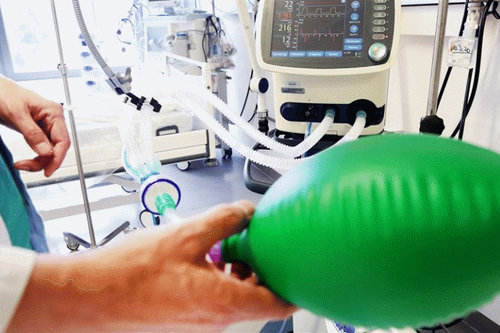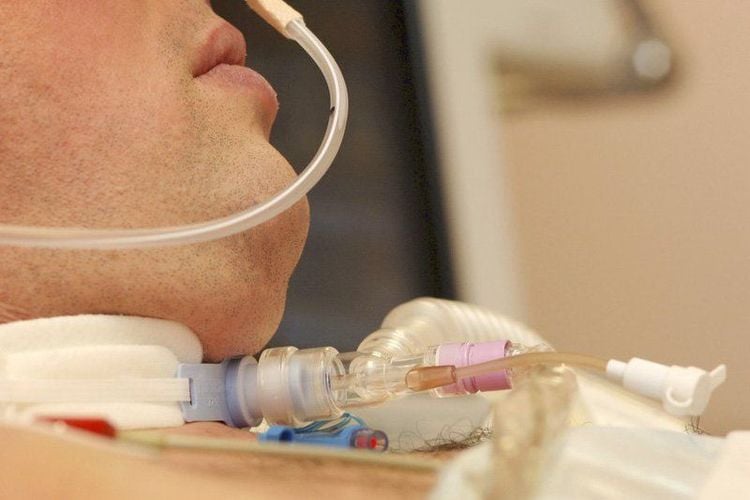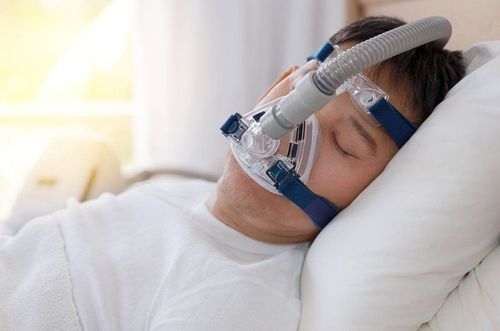This is an automatically translated article.
Posted by Doctor, Doctor Truong Ngoc Hai - Emergency Department - Vinmec Central Park International General HospitalA patient is considered difficult to wean from the ventilator if the first spontaneous breath test (SBT) fails and requires three SBTs or seven days to successfully SBT. Up to 40% of ventilated patients because of acute illness in HSCC departments are difficult to wean off ventilators.
1. Definition and incidence
Weaning off the ventilator can be classified as simple, difficult, or prolonged, where:
Simple weaning: On the first attempt, the patient was successful with spontaneous breathing (SBT). About one-half to two-thirds of patients in the intensive care unit (ICU) are simply weaned off the ventilator. Difficulty weaning off ventilator: Patient fails with first SBT; sometimes up to three tries or seven days weaning off the ventilator with SBT spontaneous breathing. accounted for from 26% to 39%. Common in patients who are intubated during the first few weeks of ICU admission. Prolonged weaning off the ventilator: Patient has failed at least three SBT attempts or needs more than seven days to wean. accounted for from 6% to 14%. Patients who required more than seven days to wean from the ventilator had a higher risk of death and were also more likely to fail than patients who were simply weaned off the ventilator.

Cai máy thở được chia thành các mức khác nhau tùy thuộc vào trường hợp của bệnh nhân
2. Identify and determine the cause
Physicians should identify and treat possible causes of failure to wean from the ventilator before continuing to wean, specifically:
Determine the cause: There are many factors that cause an imbalance between respiratory muscle strength respiration and respiratory work leading to ventilator weaning failure. Often factors associated with respiratory disease and cardiovascular disease; Psychological or nutritional disorders, related to ventilator wiring, are less common. The physician can identify and treat the cause through a physical examination, laboratory tests, arterial blood gas analysis, electrocardiogram and chest X-ray, assessment of sedation status, and examination. ventilator wiring. Treatment of the cause: The doctor should pay attention to actively intervene and treat the causes leading to difficult weaning from the ventilator. Continue weaning off the ventilator: After the Doctor has intervened and treated the possible causes of ventilator dependence, the patient's health status should be re-evaluated and followed by weaning from the ventilator. Conduct a spontaneous breathing test (SBT) similar to the initial weaning of the ventilator, except that care should be taken to keep the patient comfortable, keep the airway open, and select the appropriate mode of ventilation between sessions. weaning test; conducting a spontaneous breathing test (SBT) usually takes longer (up to two hours). Spontaneous T-tube breathing should be used in patients with cardiac dysfunction. Early mobilization/physical therapy should be given to mechanically ventilated patients to facilitate successful weaning from mechanical ventilation. However, specific treatment strategies for patients with difficulty weaning from ventilators have not been studied. The benefits of respiratory muscle training have not been well established and are therefore not routinely recommended.
3. Patients who are long-term ventilator dependent (REFRACTORY PATIENTS)
Some patients still have difficulty weaning off the ventilator even though the acute medical condition and contributing factors to weaning failure have been addressed. These cases usually undergo tracheostomy and are referred to a long-term care facility so that further weaning efforts (prolonged weaning from the ventilator) can be made. Consider tracheostomy for patients weaning off ventilators expected to be prolonged.
Bệnh nhân sẽ được cân nhắc về việc mở khí quản trong các tình huống cai máy thở kéo dài
Vinmec International General Hospital with a system of modern facilities, medical equipment and a team of experts and doctors with many years of experience in medical examination and treatment, patients can rest assured to visit. examination and treatment at the Hospital.
To register for examination and treatment at Vinmec International General Hospital, you can contact Vinmec Health System nationwide, or register online HERE.
(Translated from “Management of the difficult-to-wean adult patient in the intensive care unit. Scott K Epstein, Martin F Joyce-Brady. UpToDate)
References:
Funk GC, Anders S, Breyer MK, et al. Incidence and outcome of weaning from mechanical ventilation according to new categories. Eur Respir J 2010; 35:88. Peñuelas O, Frutos-Vivar F, Fernández C, et al. Characteristics and outcomes of ventilated patients according to time to liberation from mechanical ventilation. Am J Respir Crit Care Med 2011; 184:430. Boles JM, Bion J, Connors A, et al. Weaning from mechanical ventilation. Eur Respir J 2007; 29:1033. Jeong BH, Ko MG, Nam J, et al. Differences in clinical outcomes according to weaning classifications in medical intensive care units. PLoS One 2015; 10:e0122810. SEE MORE
Artificial ventilation (ventilator): What you need to know Weaning off: Procedures and treatment when patient weaning fails What to do if weaning from mechanical ventilation fails













